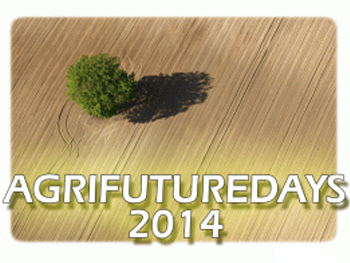
The use of ICTs is resulting in complex applications in agriculture to improve productivity, resource use, reduce time and drudgery such as for farm management, forecasting, marketing, logistics and quality assurance. ICTs are increasingly improving access to information, knowledge, skills and technology for farmers and their communities, improving farm productivity and ability to participate in markets and in contributing to increased sustainability and resilience of farming systems while transforming them to meet new challenges.
The ICTs that are currently impacting agriculture are:
- Automation, Robotics, Autonomous, Linked Tools, Equipment and Process Monitoring
- Wearable Computing
- Controller Area Networking/Sensor Networks/Grid Computing
- Big data at different scales from field and farm to global level
- Integrated Farm Management Information Systems
- Global Positioning System – Multi satellite systems with high precision
- Drones and Low cost Satellites/Micro satellites
- More precise geo-spatial data and 3D maps with elevation data
- Humidity, Environment and Soil Nutrient sensors
- Visualization and Integrated Display
- Social Media, MOOCs, Online Learning
- Access to financial services in rural areas
- Traceability systems
- Telematics and Geographical Information Systems
- Variable rate irrigation/fertigation and prescriptive planting
- Weed, Biodiversity and Pest Management through integrated systems for forecast, control and management
Participants at the Agrifuture Days 2014 Conference organized by the Club of Ossiach in collaboration with GFAR Secretariat at Villach from 16-18 June 2014 were of the opinion that family farming of the present was under severe threat. Incomes from family farming are on decline. The youth from farming families are reluctant to take up farming as a vocation. Family farmers faced difficulties and are challenged in their ability to participate in markets, by change in climate and severe weather aberrations, loss, degradation and difficult access to land, water and other inputs for farming and loss of biodiversity which affected their livelihoods. Their access to new information, knowledge, skills and technology that was useful to their farming was being continuously eroded and reduced increasing their isolation from economic, social, political and technological change. In general, family farmers across the world are abandoning their traditional livelihoods and their numbers were diminishing rapidly. However, even with the current decreases, family farming will remain a livelihood for a majority of rural people for the foreseeable future till 2030 and after.
Though family farming has many commonalities across the world, when scrutinized they face heterogeneous and different conditions such as in crops grown, size of farms, government policies, access to new knowledge and technology etc in each region, country and community. This entails that the applications of ICTs will need to be adopted and adapted for local conditions and their effective use.
Several scenarios may happen, with current trends, policies and directions by governments and societies, for family farming in the future. These include emergence of rural poles of farms and farming linked to complex agri-food chains, continuum of rural-urban multifunctional systems of activities linked to local markets of diversified products, agro-industrial systems of activity linked to global markets of standardised products and marginalized family farms in abandoned rural areas.
Participants in the conference expressed the opinion that applications of ICTs could influence the emergence and the function of underlying systems that support the above scenarios. Vice-versa the emergence of these scenarios could influence the application and use of ICTs. For example, rural poles with complex agri-food chains for agricultural commodities used as industrial and manufacturing feedstock and food would benefit from ICTs automation, robotics, integrated farm management systems and traceability systems. Rural-urban systems could benefit significantly from information systems that enable educating producers and consumers on linkages between production and consumption in terms of resources used, wastage, ecosystem conservation and community participation. Similarly, large agro-industrial systems would greatly benefit from ICTs that can monitor and support decision making at various levels as also automate many human labour intensive farming functions.
Participants at the Conference after considering the various trends (and possible disruptions) in family farming and ICTs, their possible scenarios and the key driving forces, equitable participation in fair and just markets and the need for learning to learn and effectively use knowledge, skills and technology for continuously adapting and improving family farming to emerging challenges concluded that family farmers for improving their farming systems through ICTs needed:
- Policies promoting and enabling aggregation of family farmers and farming systems such as through cooperatives, producer organizations, farmer organizations etc. ICTs can contribute to “virtual” aggregation of farms, synchronization of farm inputs, processes, outputs and logistics to participate in markets.
- New forms of advisory and support services for knowledge, skills and technology and for participation in markets including for prices, forecasts and finance
- Trust Centers with Data and Information Agreements, Treaties with regulatory and enforcement mechanisms to share data at various levels and among multiple categories of users from plot, farm, farming system, region, national to global agricultural and related systems.
- Inclusive Governance of flow of data, information, knowledge, skills and technology
- Inclusive development of standards
- Open Technologies – Open data, information, knowledge, learning
- Increased democratization of science, learning and support to exponential innovation
- Lower cost of Hardware, infrastructure and connectivity
The participants recommended that these needs have to be considered together and actions taken to be holistically addressed to yield benefits to family farmers. They cautioned that action on only one or two items, as it usually happens, may not have beneficial results.
The Proceedings of the Conference are under preparation and are expected to be available through the EGFAR Website at http://www.egfar.org/news/smallholder-s-access-ict
